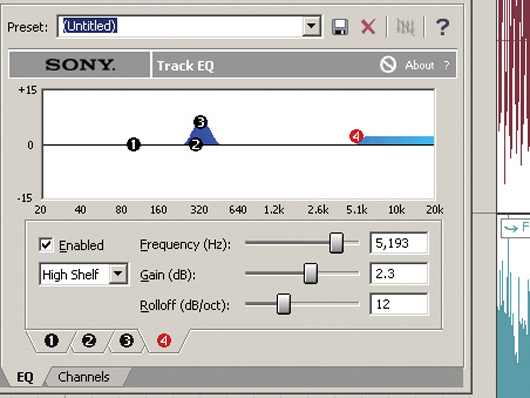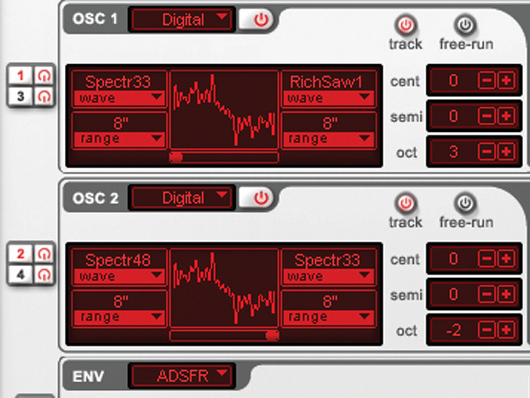How to make a dubstep track with Rusko

The kick
Step 1: Rusko always begins his tracks by creating a drum pattern, and Rat Track, the dirty dancefloor beast that we’re dissecting here, is no exception. The first element is a kick drum, sampled from a house track. This has been equalised using Acid Pro 6’s built-in EQ. The 79Hz region is boosted by 2.9dB to add punch, and a high shelf is used to give extra presence to the rhythm.
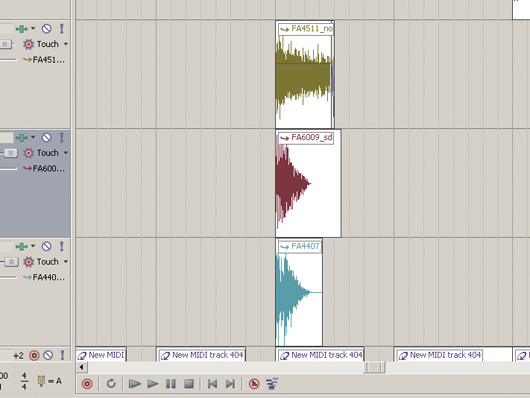
Snare layers
Step 3: To get a bigger sound, the main snare is layered with two others – a clap with a 1.5kHz EQ boost, and a section of white noise to add some air. “It’s very important to layer up your snares in dubstep,” advises Rusko. “I know a lot of people cut out the snare from an Amen loop and layer that underneath a more natural snare, which gives it a lot of crack.”
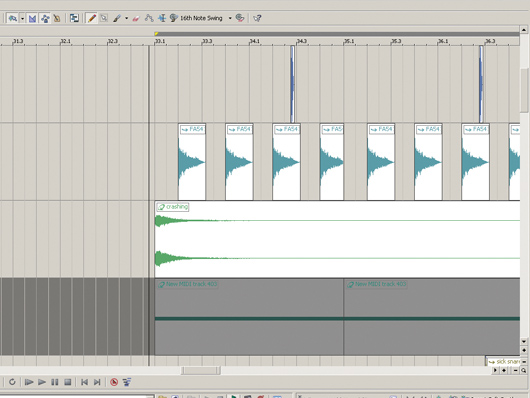
White noise swoosh
Step 4: The kick and snare are the main elements that make up the drum loop. Once they’re boosted and shaped to the required standard, Rusko begins to add some other sounds, such as this white noise swoosh that works much like a cymbal crash at the start of each bar. Now the mix is fuller in the higher frequencies.
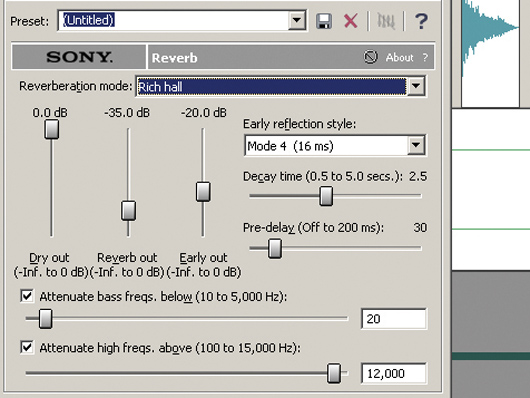
The ride
Step 5: Next, a simple, straight ride cymbal is placed on the offbeat. A fairly long delay reverb is applied, but it shouldn’t be too long. “People think of ‘dub’ and then drench everything in reverb,” laments Rusko, “but if you’re making straight dancefloor tracks, you want – ‘pow!’ – real punchy drum hits. You don’t want them sunk in a sea of reverberation.”
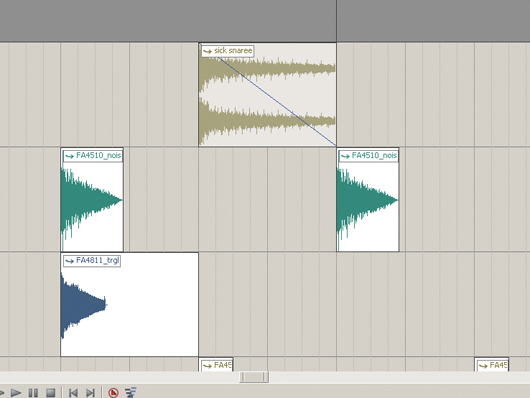
Spring reverb snare
Step 6: Percussive effects such as this spring reverb snare from a dub track are added to the rhythmical mix. “Put them in once or twice and it changes a four bar loop into something that turns around every 16 bars. It just makes it slightly more interesting for the listener.” This snare is faded out and has a reverb insert on it, so it doesn’t end too abruptly.
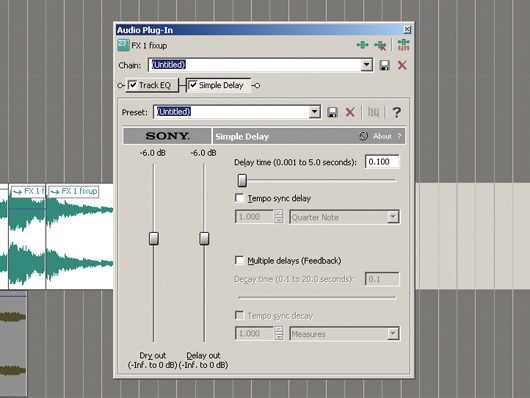
The grunt
Step 7: Rusko likes to make his own sound effects using his Samson C01U USB mic. “Some of the best snares and hi-hats I’ve used have been made by just turning up the gain on the mic and going ‘shhh’ or ‘pop’ or something into it,” he reckons. The funky-style grunt used here is Rusko’s own work, but it has been pitched down and delayed to add a certain sonic character.
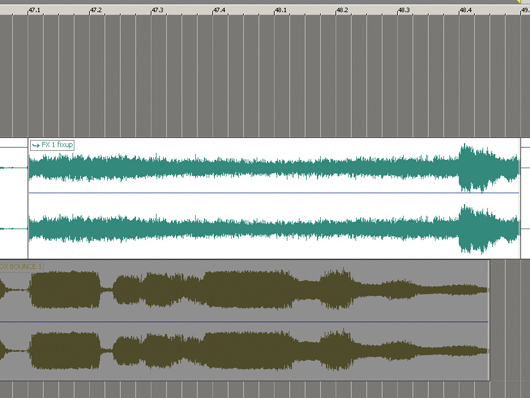
Effects
Step 8: Even major track effects, such as rises, are put in before the synths and basslines are added. The delayed rising effect at the end of the bar segues into the funk grunt at the start of the next bar. Using effects dynamically in this manner gives the backing its own flavour, even before any melodic elements are added.
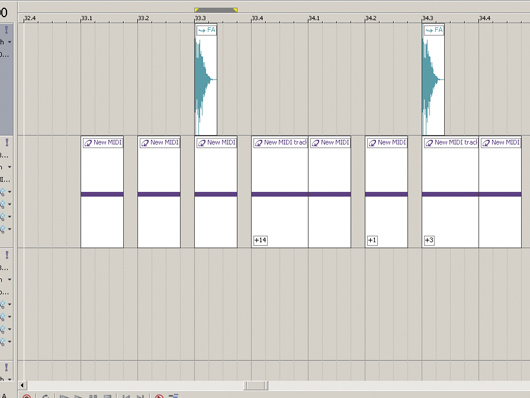
The bassline
Step 9: Once the embellishments are sorted, Rusko starts with the next vital element of the track: the bassline. Rather unusually, he doesn’t program the tune of the bass using the MIDI grid editor, preferring instead to draw in a single note, before pitching the MIDI object in Acid’s arrangement editor.
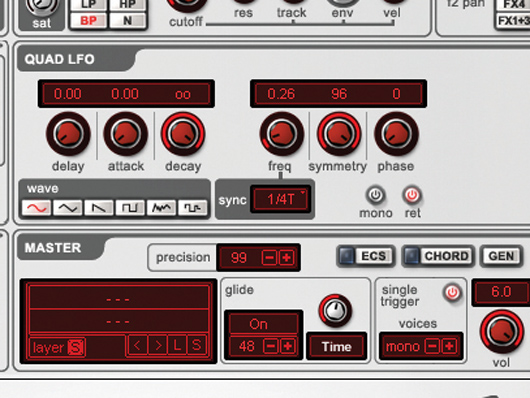
Filtering
Step 11: The oscillators are transposed to different octaves in order to fill up the frequency spectrum. Once a sufficiently nasty sound has been created, Albino 3’s low-pass filter is used to sculpt the sound. The filter’s cutoff is modulated via an LFO, which is synced to the track’s tempo with a quarter-note triplet setting.
Computer Music magazine is the world’s best selling publication dedicated solely to making great music with your Mac or PC computer. Each issue it brings its lucky readers the best in cutting-edge tutorials, need-to-know, expert software reviews and even all the tools you actually need to make great music today, courtesy of our legendary CM Plugin Suite.
